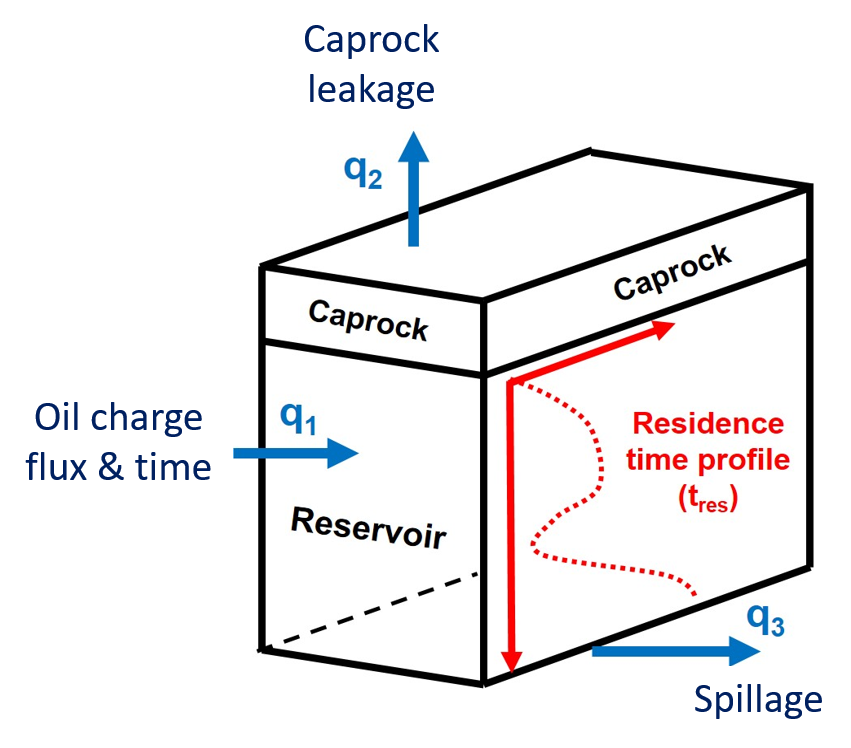Rip van Winkle
Rip van Winkle is a fictional character who had slept through the American Revolutionary War and discovered shocking change when he woke up. He later realized that he had been asleep for at least twenty years, based on data acquired from other villagers.
Radiometric dating of geological events was a pivotal achievement (Holmes, 1911). Dating petroleum charge times, oil residence times and charge rate in a trap would be equally pivotal and eliminate, at a stroke, much arm-waving, geopoetry and speculation concerning charging times and routes. Charge times and rates are key variables in controlling hydrocarbon prospectivity as they define volumes of trapped petroleum and the dynamics of trap integrity, including leakage phenomena. Such constraints would allow for basin scale prospectivity estimates based on assessment of fraction of total basin charge trapped and more realistic assessment of regional caprock efficiencies when only limited cored cap rock material is available. This would also be an important parameter in the assessment of undersampled caprocks associated with potential CO2 storage sites for CCS, fracking fluid containment and alternative carbon storage vectors.


Schematic illustration of fluid fluxes in and out of a reservoir and the resulting residence time profile
Yet, a practical method for dating petroleum field charging time from analysis of reservoired fluids did not exist. While forward basin models can provide estimates of charging times, they are unconstrained by any time-dependent measurements that can be made on the fluids and errors are large. The reality is that current solutions are totally non-unique and, in the absence of true validation data of source rock contributions and oil charge times, could have errors as large as order of magnitude level. The Re-Os method (Selby and Creaser, 2005) looks interesting, but the location of metals and exchange between fluids and solids in the system is not well defined and mechanisms for how an internal radiometric clock can track oil charge or residence time remain quite uncertain. The most robust dating methods must involve oil components that do not exchange with reservoir media!
During the Rip van Winkle Project, we investigated how nuclear radiation in reservoirs impacts oil composition. From that, we saw how feasible it was to develop in situ gamma ray radiolysis proxies (RvW’s, in our parlance), such as the petroleum radiolysis products described by Frolov et al. (1998), as a means of assessing oil and gas residence time profiles in reservoirs.
Achievements
There have been many fundamental and applied scientific breakthroughs during the project, most of which have been made public:
(PAPER) The first paper in a series of publications based on the RvW approach sets out the geochemical landscape and constraints on radiation-based age dating proxies.
(PAPER) The second paper explores bulk radiolysis-induced alterations to petroleum composition to suggest alternative radiolysis proxies.
(PAPER) The discovery that radiolysis is a source of 13C depleted natural gases in the geosphere, with important implications for the geochemical interpretation of natural gas occurrences.
(PATENT) Dating petroleum reservoir fluid residence times. The technology has been licensed and is commercially available through the PRG spin-off company LysisLogic Scientific Inc.
(NEW RESEARCH) Our experience with organic geochemistry and radiolysis, derived from Rip van Winkle, happens to be of utmost relevancy in the understanding of eventual signs of life in sedimentary records of planetary bodies. The PRG Mars team (Lloyd Snowdon, Renzo Silva, Steve Larter) are examining radiation impacts on Martian organic matter production and alteration.
(REVIEW PAPER) A review paper titled "Impacts of natural irradiation on sedimentary organic matter - A review" was submitted to Organic Geochemistry.
Acknowledgements
Lundin Norway, Petrobras, Aker BP and Equinor are acknowledged for having sponsored the Rip van Winkle consortium in one or more of its phases. The various science teams are acknowledged for stimulating useful discussions. All authors from Larter et al. (2019) are acknowledged for their support in the early stages of in this research program.
Industry Partnership Opportunities
Contact Steve Larter (slarter@ucalgary.ca) or Renzo C. Silva (rcsilva@ucalgary.ca)
References
Silva, R.C., Snowdon, L.R., Huang, H., Larter, S., 2021. The dating of petroleum fluid residence time in subsurface reservoirs. Part 2: Tracking effects of radiolysis on crude oil by comprehensive molecular analysis. Organic Geochemistry 152, 104142. https://doi.org/10.1016/j.orggeochem.2020.104142
Larter, S., Silva, R.C., Marcano, N., Snowdon, L.R., Villarreal-Barajas, J.E., Sonei, R., Paredes Gutiérrez, L., Huang, H., Stopford, A., Oldenburg, T.B.P., Zhao, J., Weerawardhena, P., Nightingale, M., Mayer, B., Pedersen, J.H., di Primio, R., 2019. The dating of petroleum fluid residence time in subsurface reservoirs. Part 1: A radiolysis-based geochemical toolbox. Geochimica et Cosmochimica Acta 261, 305-326. https://doi.org/10.1016/j.gca.2019.07.020
Silva., R.C., Snowdon, L., R., Huang., H., Nightingale, M., Becker, V., Taylor, S., Mayer, B., Pedersen, J.H., di Primio, R., Larter, S., 2019. Radiolysis as a source of 13C depleted natural gases in the geosphere. Organic Geochemistry 138, 103911. https://doi.org/10.1016/j.orggeochem.2019.103911
Marcano, N., Villarreal-Barajas, J.E., Oldenburg, T.B.P, Snowdon, L., Sonei, R., Huang, H., Weerawardhena, P., Briscoe, M., Silva, R.C., Song, F., Paredes Gutierrez, L., Larter, S.R., 2015. The dating of fluid residence time in petroleum and CO2 storage reservoirs. Part 1: Challenges and a design schematic for a practical geochemical toolbox. IMOG 2015, Prague – Czech Republic.
Selby, D. and Creaser, R.A., 2005. Direct radiometric dating of hydrocarbon deposits using rhenium-osmium isotopes. Science, 308, 1293-1295.
Frolov, E.B., Smirnov, M.B., Melikhov, V.A. and Vanyukova, N.A., 1998. Olefins of radiogenic origin in crude oils. Organic Geochemistry, 29, 409-420.
Holmes, A., 1911. The association of lead with uranium in rock minerals and its application to the measurement of geological time, Proc. Royal Society, Ser. A, 85, 248-256.
